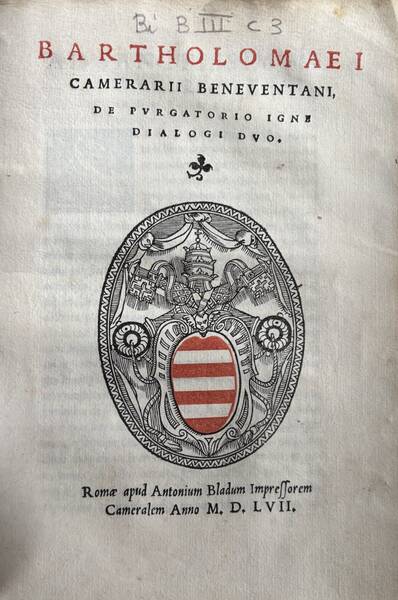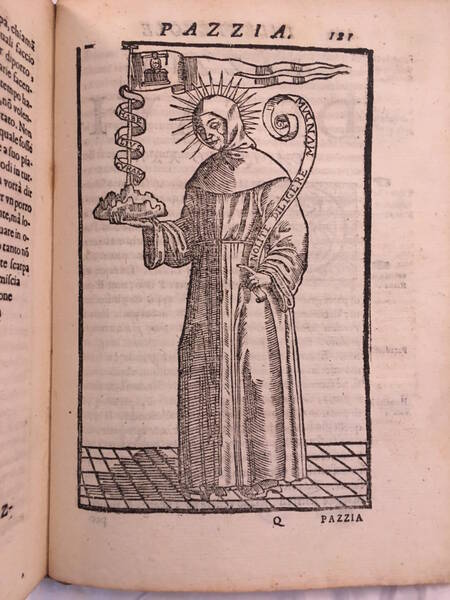PETRARCA, Francesco. Il Petrarcha con l'espositione di m. Giouanni Andrea Gesualdo, nuouamente ristampato, e con somma diligenza corretto, con nuoua tauola di tutte le cose degne di memoria, che in essa espositione si contengono, & ornato di figure.
Venice, appresso Gabriel Giolito de Ferrari e fratelli., 1553.Quarto (233 x 145 mm.), [26] leaves, 667 [i.e. 683], [1] pages. “Architectural title-border including Giolito's phoenix device. The title is set in two cartouches in the upper half of the border. The imprint is set in a smaller cartouches below the device. Portraits of Laura and Petrarca on a woodcut funerary urn surmounted by the Giolito phoenix. The cut measures 85 x 70 mm. and illustrates the Sonetto sopra le sacre ceneri del Petrarca e di Laura […]. The portraits are based on the Laurentian miniatures […]. Full page map of Vacluse […], a reduced copy of the double-page woodcut map in the first Vellutello edition, Venice, Giovanni Antonio de'Nicolini da Sabbio and brothers, 1525”. (Mortimer) The second part of the book, containing the Trionfi, has a separate emblematic title-page with Giolito's phoenix and is illustrated with six woodcut vignettes. A very fine, large paper copy in nineteenth-century brown English calf, panels with gilt and blind frames, spine gilt in compartments, gilt edges. From the collection of Charles Fairfax Murray (ex libris).
Very rare large paper copy of the third edition of Gesualdo's acclaimed commentaries on Petrarca, revised in light of Vellutello's critical publication and with additional illustrations by Enea Vico (1523-1567). Printed by Gabriele Giolito, this edition follows the general structure of the two earlier ones published by the Sabbio brothers in 1533 and 1541, without the giunta of five sonnets. It is divided into two parts with separate title-pages, the first with commentary on the Canzoniere, the second on the Trionfi. It adds, however, an ornate frontispiece in a classical style for the first section and an emblematictitlepage with the motto ‘De la mia morte eterna vita io vivo', surrounded by a phoenix rising from the flames to the second section. Additionally, numerous historiated initials populate the text, while each triumph is introduced by a woodcut vignette, and an anonymous sonnet with a portrait of Petrarca and Laura facing each other precedes their biographies. Giolito's edition also includes a full-page woodcut map of Vaucluse and Avignon – where Petrarca lived both in his youth and later years – which had been first published accompanying Alessandro Vellutello's (b. 1473) commentaries.
"Giolito faithfully kept his promises in the said title, since this is truly a beautiful edition, and worthy of praise. Its existence was questioned for some time, and in fact it is very rare.'' (Marsand, p. 64)
A fine copy from the workshop of Gabriele Giolito (c.1508-1578), a prominent publisher of Classical works in the lingua volgare, or the Italian vernacular. In its prime, his workshop produced a vast number of editions of Petrarca and commentaries on his poetry, reaching up to 24 editions in the sixteen-year period between 1544 and 1560. (Daniels, Printing Petrarch) His shop in Venice, the Libreria della Fenice was often frequented by men of letters such as Orazio Lombardelli (1545-1608) and Guglielmo Gonzaga, Duke of Mantua (1538-1587). Giolito's publications were celebrated for his typographical excellence and he was ranked among the greatest printers of his time, being equated by Torquato Tasso (1544-1595) to Aldus Manutius (1450-1515).
Francesco Petrarca (1304–1374) was an Italian humanist scholar and poet, crowned Poet Laureate, and often considered the "Father of Humanism" due to his discovery of a manuscript of Cicero's letters in the Biblioteca Capitolare of Verona. His most well-known work, Rerum vulgarium fragmenta or Canzoniere, is included in the first part of this edition, completed with extensive commentary by Giovanni Andrea Gesualdo (b.1496). It is a collection of love poetry with sonnets, chants, and madrigals dedicated to his unrequited love for Laura, divided in two halves: the first 227 poems proclaim his love while Laura is alive, while the other 108 mourn her death. The second work included in this commentary is the Trionfi. Written later in his life, it is an allegorical poem that explores moral and philosophical themes such as Love, Chastity, Death, Fame, Time, and Eternity, while depicting the soul's ascension from the temporal world toward divine transcendence.
Worldcat records only 4 copies of this edition in United States libraries.
USTC 847853; EDIT16 CNCE 27048; BMST Italian Books p. 505; Adams P820; Fiske p. 103; Hortis 97, p. 54; Marsand p. 64. Rhiannon Daniels, “Printing Petrarch in the Mid-Cinquecento: Giolito, Vellutello, and Collaborative Authorship.” Italian Studies 75 (1): 20–40, 2020.
Other Books
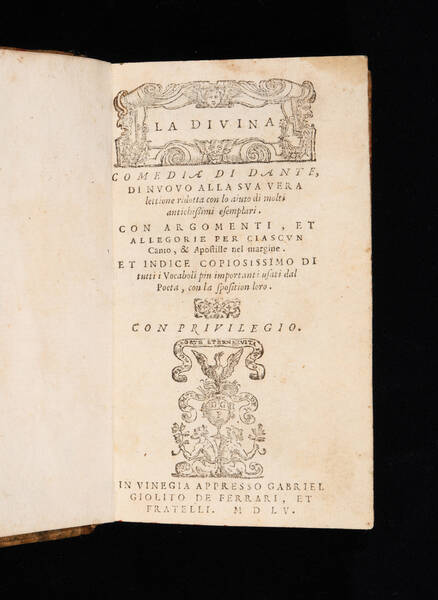
ALIGHIERI, Dante
La Diuina Comedia di Dante, di nuouo alla sua vera lettione ridotta con lo aiuto di molti antichissimi esemplari. Con argomenti, et allegorie per...
SOLD OUT
MERCURIALE, Girolamo
Artis gymnasticae apud antiquos celeberrimae, nostris temporibusignoratae, libri sex.
SOLD OUT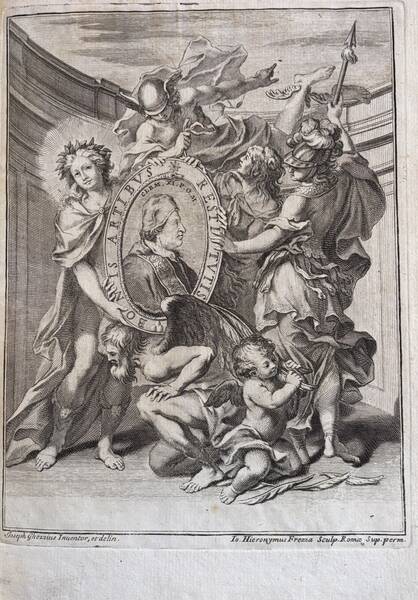
GHEZZI, Giuseppe
Roma tutrice delle belle arti, pittura, scultura, e architettura – mostrata nel Campidoglio dall'Accademia del disegno il dí 2. Ottobre 1710. Essendo...
€ 700![[The Commentaries.] C. Julii Cæsaris Quae Extant. Accuratissimè cum Libris Editis & MSS optimis Collata, Recognita & Correcta. Accesserunt Annotationes Samuelis Clarke. S.T.P. Item Indices Locorum, Rerumque & Verborum Utilissimæ. Tabulis Æneis Ornata. [The Commentaries.] C. Julii Cæsaris Quae Extant. Accuratissimè cum Libris Editis & MSS optimis Collata, Recognita & Correcta. Accesserunt Annotationes Samuelis Clarke. S.T.P. Item Indices Locorum, Rerumque & Verborum Utilissimæ. Tabulis Æneis Ornata.](https://www.medariquier.com/typo3temp/pics/e0a4828aa4.jpeg)
CAESAR, Gaius Julius
[The Commentaries.] C. Julii Cæsaris Quae Extant. Accuratissimè cum Libris Editis & MSS optimis Collata, Recognita & Correcta. Accesserunt...
€ 20.000![[De Architectura libri decem], M. Vitruuius per Iocundum solito castigatior factus cum figuris et tabula vt iam legi et intelligi possit. [De Architectura libri decem], M. Vitruuius per Iocundum solito castigatior factus cum figuris et tabula vt iam legi et intelligi possit.](https://www.medariquier.com/typo3temp/pics/b57e48f107.jpg)
VITRUVIUS POLLIO, Marcus
[De Architectura libri decem], M. Vitruuius per Iocundum solito castigatior factus cum figuris et tabula vt iam legi et intelligi possit.
SOLD OUT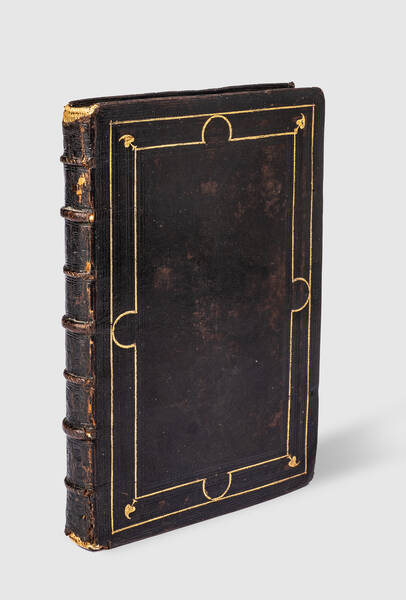
GUEVARA, Antonio de, ROSEO, Mambrino (trans.)
Institutione del Prencipe Christiano, di Mambrino Roseo.
€ 9.000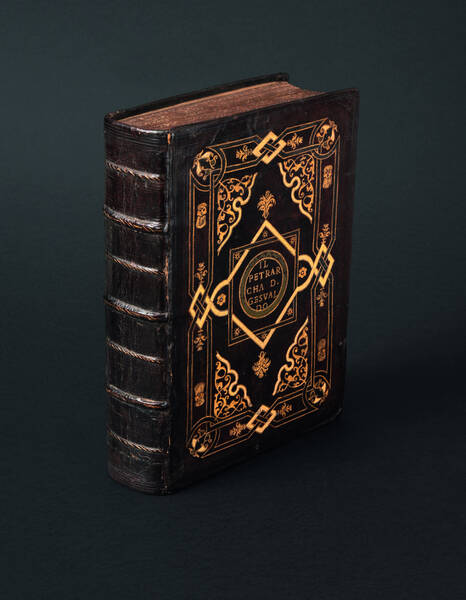
PETRARCA, Francesco
Il Petrarcha colla spositione di misser Giouanni Andrea Gesualdo. I Triomphi del Petrarcha colla spositione di misser Giouanni Andrea Gesualdo da...
SOLD OUT
PETRARCA, Francesco
Li Sonetti canzone e triumphi del Petrarcha con li soi commenti non senza grandissima euigilantia et summa diligentia correpti et in la loro primaria...
€ 9.000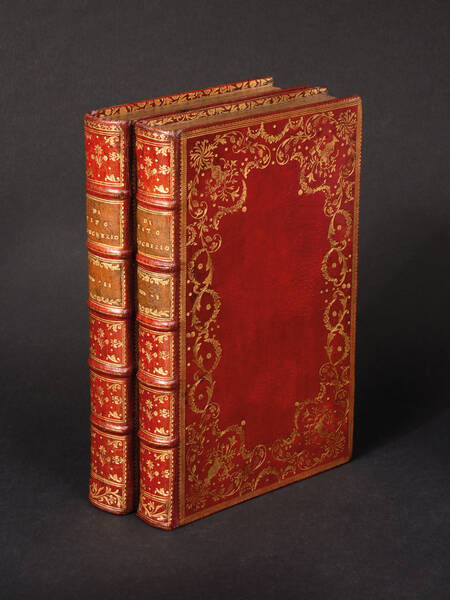
LUCRETIUS, Titus Carus
Della natura delle cose libri sei, tradotti dal Latino in Italiano da Alessandro Marchetti. Dati nuovamente in luce da Francesco Gerbault.
€ 7.000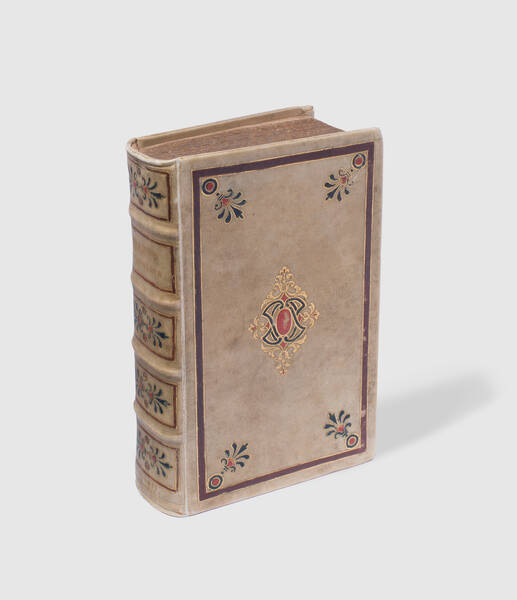
ALIGHIERI, Dante
Commedia di Dante insieme con vno dialogo circa el sito forma et misure dello Inferno.
SOLD OUT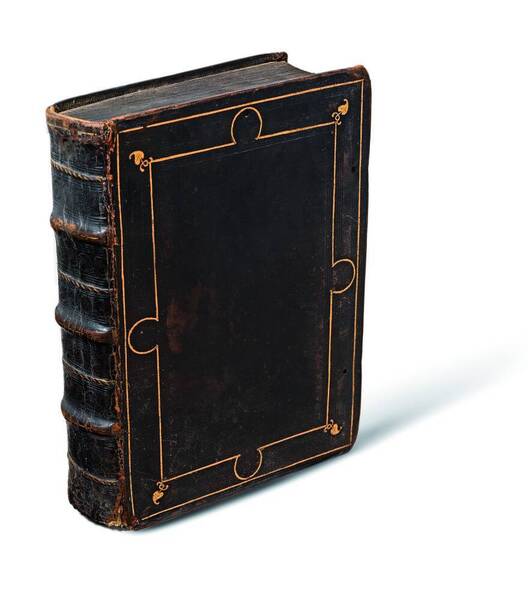
PLINIUS
Historia naturale di C. Plinio Secondo di latino in volgare tradotta per Christophoro Landino, nuouamente in molti luoghi, doue quella mancaua,...
€ 6.000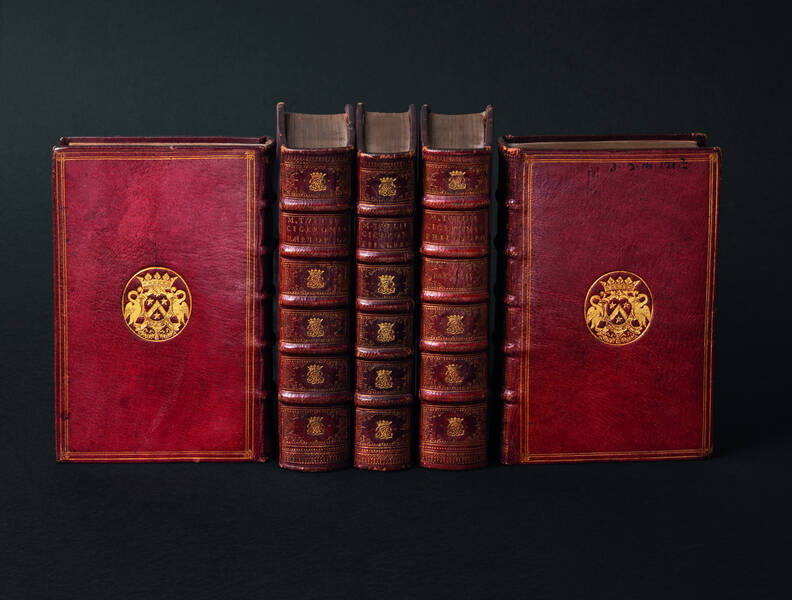
CICERO, Marcus Tullius
De Philosophia (1552) - Officiorum Libri tres (1552) - Rhetoricorum Ad C. Herennium (1550) - Epistolae ad Atticum (1551) - Epistolae Familiares...
SOLD OUTMEDA RIQUIER rare books ltd.
4 Bury Street St James's
SW1Y 6AB London
Phone +44 (0) 7770457377
info@medariquier.com
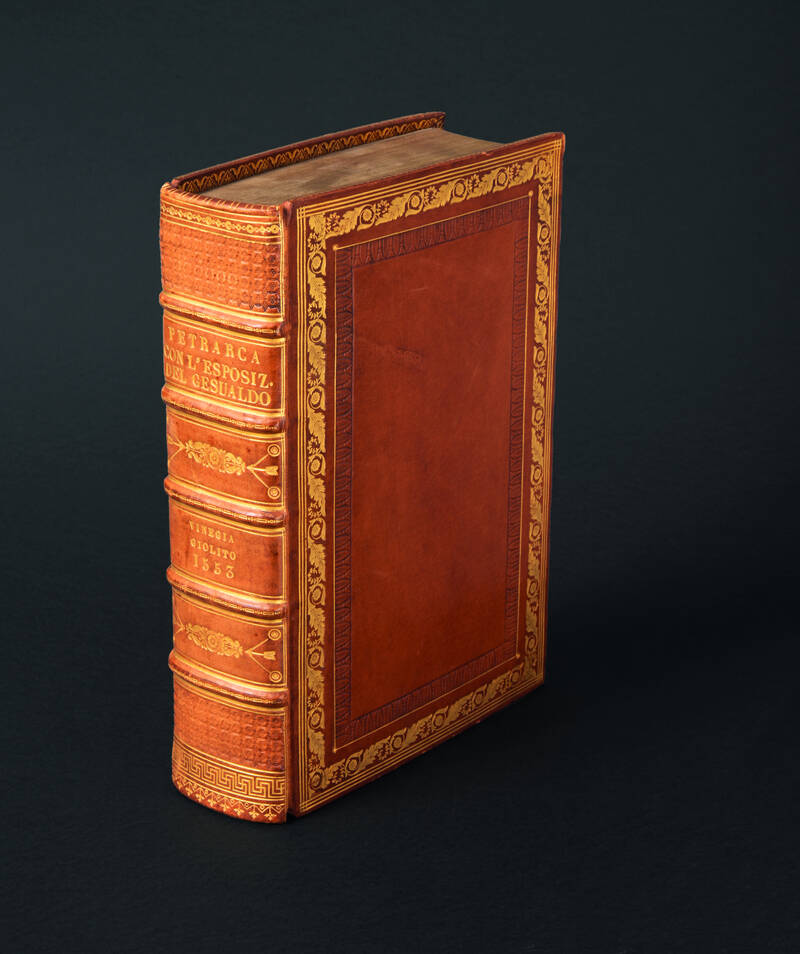
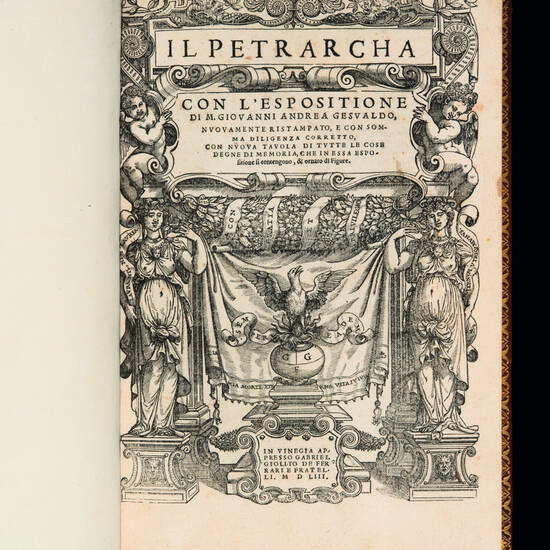

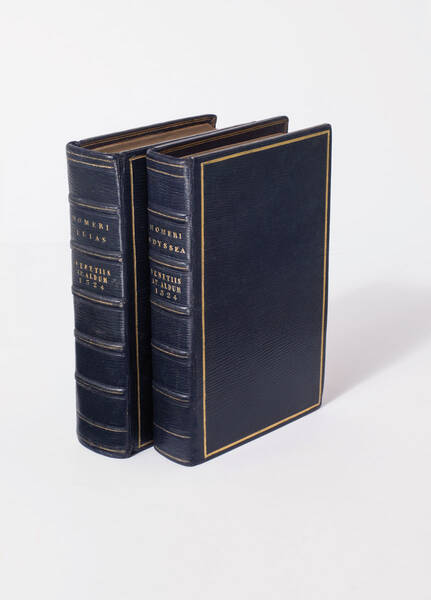
![Opera posthuma [Compendium grammatices linguae hebraeae]. Opera posthuma [Compendium grammatices linguae hebraeae].](https://www.medariquier.com/typo3temp/pics/9e46dbc214.jpg)
